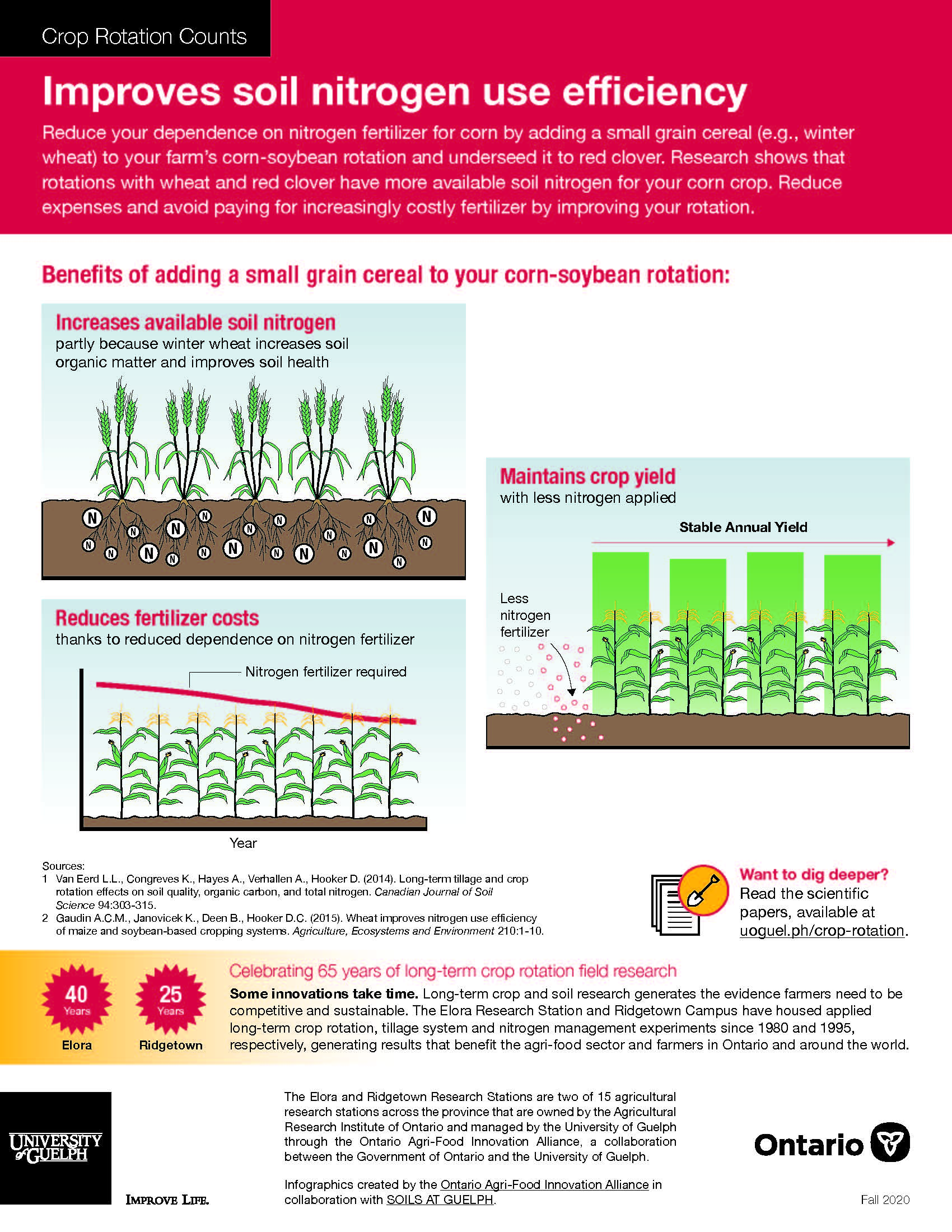Crop Rotation Counts: Improves Soil Nitrogen Use Efficency (Text Version)

Reduce your dependence on nitrogen fertilizer for corn by adding a small grain cereal (e.g., winter wheat) to your farm’s corn-soybean rotation and underseed it to red clover. Research shows that rotations with wheat and red clover have more available soil nitrogen for your corn crop. Reduce expenses and avoid paying for increasingly costly fertilizer by improving your rotation.
Benefits of adding a small grain cereal to your corn-soybean rotation:
- Increases available soil nitrogen, partly because winter wheat increases soil organic matter and improves soil health.
- Maintains crop yield (stable annual yield) with less nitrogen fertilizer applied.
- Reduces fertilizer costs over the years thanks to reduced dependence on nitrogen fertilizer.
Sources:
- Van Eerd L.L., Congreves K., Hayes A., Verhallen A., Hooker D. (2014). Long-term tillage and crop rotation effects on soil quality, organic carbon, and total nitrogen. Canadian Journal of Soil Science 94:303-315.
- Gaudin A.C.M., Janovicek K., Deen B., Hooker D.C. (2015). Wheat improves nitrogen use efficiency of maize and soybean-based cropping systems. Agriculture, Ecosystems and Environment 210:1-10.
Want to dig deeper?
Celebrating 65 years of long-term crop rotation field research
Some innovations take time. Long-term crop and soil research generates the evidence farmers need to be competitive and sustainable. The Elora Research Station and Ridgetown Campus have housed applied long-term crop rotation, tillage system and nitrogen management experiments since 1980 and 1995, Ridgetown respectively, generating results that benefit the agri-food sector and farmers in Ontario and around the world.
The Elora and Ridgetown Research Stations are two of 15 agricultural research stations across the province that are owned by the Agricultural Research Institute of Ontario and managed by the University of Guelph through the Ontario Agri-Food Innovation Alliance, a collaboration between the Government of Ontario and the University of Guelph. Infographics created by the Ontario Agri-Food Innovation Alliance in collaboration with SOILS AT GUELPH.